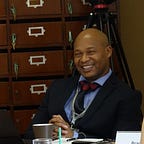Central African Republic: Boosting the potential of artisanal diamond mining
Central African Republic (CAR) is on a path of possible peace and development. The rich natural resource wealth including forestry, diamonds and gold provides the basis for kick starting development. However, the state has found itself unable to fully regulate access to and exploitation of its natural resources. This has significantly eroded its revenue base resulting in a grossly underfunded fiscal position, struggling to pay its civil servants and unable to deliver basic services.
The diamond sector remains the country’s principal source of revenue. CAR diamonds are renowned for generally being of high quality with 80% of them estimated to be of gem quality. The sector accounts for up to 60% of the state’s export earnings and up to 11% of the government’s fiscal revenues.
The challenge is that the diamond industry is almost solely artisanal; characterised by high informality. Only as much as 2% of the artisanal miners in the country are registered and an estimated third of the diamond production illicitly leaves the country.
To reap the potential benefits of Central Africa’s diamond mining sector, the government needs to implement a range of reforms
Despite the informality, the sector remains a source of livelihoods. Estimated data suggests that, in 2011, as much as 2.8 million people (70% of the population) were either directly or indirectly dependent on the sector. The data further show that in addition to directly employing 4 miners; each artisanal miner induces the creation of 2 additional jobs and indirectly benefits a further 22 beneficiaries.
So significant are the employment effects of the diamond sector, a USAID report in 2010 estimated that the sector had the potential to inject $144.7 million into local economies. This amount could also increase government revenues more than twenty-fold. Additionally, a formalised artisanal sector would greatly starve armed groups of funding and hence sustain peace. The sector played an important role in sustaining armed groups through illegal mining and parallel taxation systems.
CAR’s artisanal diamond mining sector therefore exhibits latent transformative potential. However in order to reap these potential benefits, it is important that the government implements a range of reforms aimed at promoting mass formalisation. The main aim of these interventions should be the removal of costly policy, legislative and fiscal barriers to legal artisanal mining.
These barriers include a mineral policy that is fundamentally focused on attracting foreign investment at the cost of developing the artisanal mining sector. CAR therefore needs to strengthen its mining policy to address the particular challenges faced by artisanal miners.
High registration costs, rents, taxes and royalties are probably the biggest disincentive to formalisation. The US$105 registration fee paid upfront and a royalty rate of 7% are high costs artisanal miners face. The USAID report mentioned above estimated that lowering the registration fee to US$5 has the potential of legalizing more than 65,000 artisanal miners and add a further 4.2% to GDP.
Additionally, the fact that state presence outside of the capital is very thin means that legitimacy of the policy in the mining areas is continually undermined. With the resumption of peace, there is a need to strengthen local governance of the mining sector.
The above reforms will have to be accompanied by an extensive array of financial and technical support aimed at improving health and safety at mining sites, upgrading the business management skills of miners and enhancing the awareness around the environmental impact of mining.
Formalisation, coupled with policy, legislative and fiscal reforms, will stimulate further economic spin-offs from diamond mining. Moat importantly the sector will further expand government revenue for financing growth and the achievement of the Sustainable Development Goals (SDGS).
Originally published at https://www.africa.undp.org.
